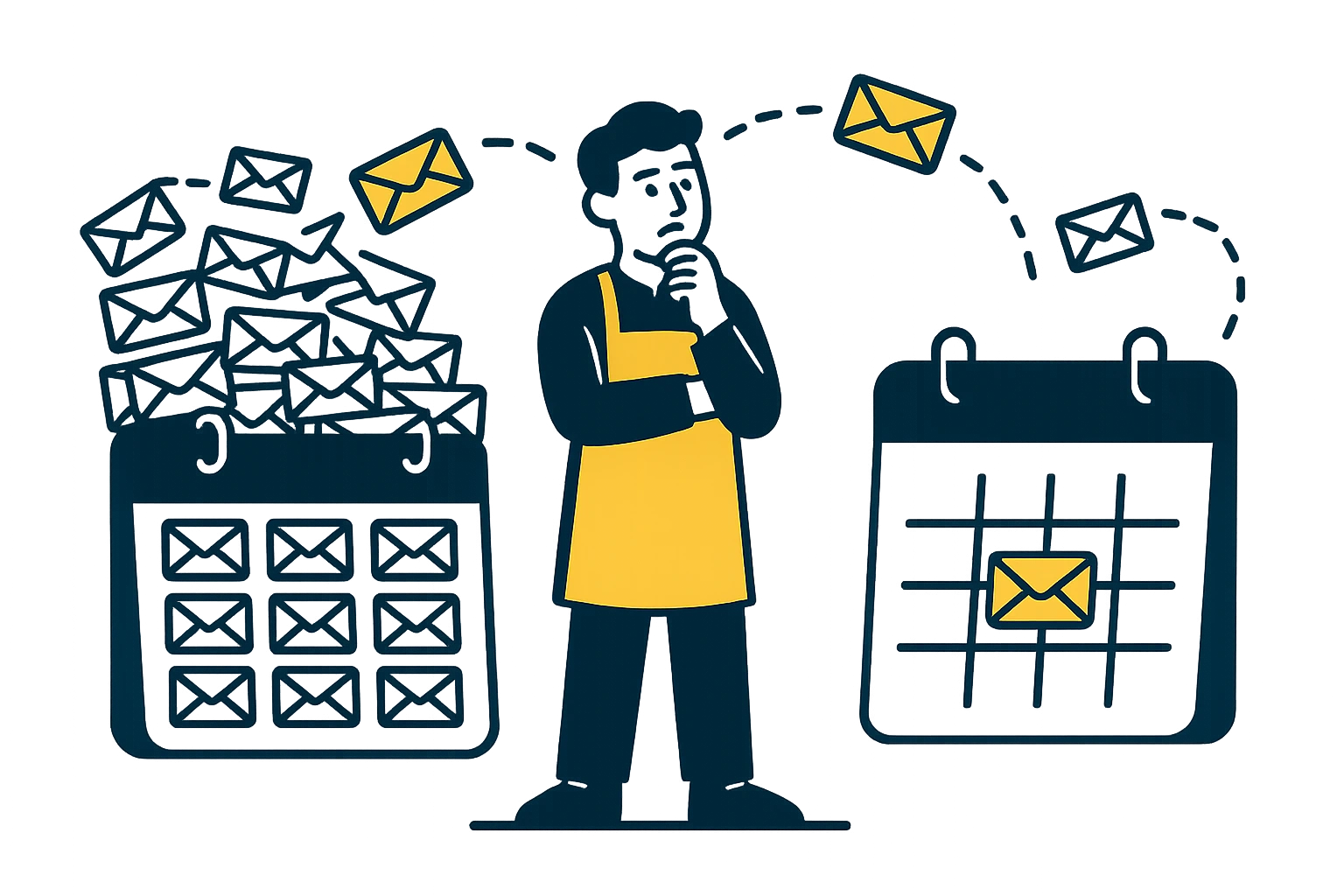“How many emails are too many?”
That’s one of the most common questions we hear from small and local business owners — and the answer is: it depends.
Email marketing is powerful, but when done without a clear strategy, it can burn out your list, increase unsubscribes, or worse, land you in the spam folder. On the flip side, emailing too little means missed opportunities and forgettable branding.
At EmailMarketingBooster.com, we help businesses strike the perfect balance. In this blog, we’ll walk you through how often you should email your customers — based on your goals, industry, and audience behavior — and give you actionable tips to stay consistent without overwhelming.
Why Email Frequency Matters
Your email frequency directly impacts:
- Engagement Rates (opens, clicks, replies)
- Unsubscribes & Spam Reports
- Conversions & Sales
- Brand Trust & Authority
In short, how often you show up in the inbox determines how your audience perceives and responds to your brand.
What’s the Ideal Frequency for Small Businesses?
Here’s a general starting point based on industry experience:
| Business Type | Recommended Frequency |
|---|---|
| Retail / E-commerce | 2–3 times per week |
| Local Services (salons, fitness, etc.) | 1–2 times per week |
| B2B / Consulting | 1 email per week or biweekly |
| Real Estate / Event-Based | 1 email per week or per event |
| Restaurants / Cafes | 2 times per week or around offers |
This is a baseline — not a hard rule. Always adjust based on results and audience behavior.
4 Signs You’re Emailing Too Often
- 📉 Spike in Unsubscribes: If you notice people dropping off fast, you may be overwhelming them.
- 🚫 Low Open Rates: Fatigue sets in when your audience stops paying attention.
- 😡 Negative Feedback or Spam Flags: A major red flag that you’re pushing too hard.
- ❌ No Clear Value in Messages: If you’re emailing just to email, your audience knows it.
3 Signs You’re Not Emailing Enough
- 🤷 People Forget About You: Infrequent emails = lost mindshare.
- 💸 Missed Promotional Windows: If you’re not present during key moments (sales, holidays), you’re leaving money on the table.
- 🔕 No Data to Optimize: You can’t test and learn if you’re only emailing once a month.
How to Find Your Ideal Email Frequency
✅ 1. Set a Consistent Schedule
Consistency builds trust. Whether you email weekly or biweekly, pick a rhythm and stick with it.
Example: “We email every Thursday at 10 AM with helpful tips and updates.”
✅ 2. Segment Your List
Not everyone wants the same frequency. Segment by:
- New vs. returning customers
- VIP buyers
- Event attendees
- Inactive subscribers
This allows you to customize frequency based on behavior.
✅ 3. Track Engagement Metrics
Watch your open rates, CTR, and unsubscribes. These tell you how your audience feels about your timing.
💡 Our Pro Plan includes weekly engagement reports and optimization suggestions.
✅ 4. Use Automation Wisely
Automation can help you email more often without annoying people. Examples:
- Welcome sequences
- Post-purchase follow-ups
- Cart recovery emails
- Birthday and event triggers
Set it and forget it — the right messages reach the right people, at the right time.
Best Practices for Email Frequency
- 🎯 Always Lead with Value — Every email should answer: “What’s in it for the reader?”
- 🕒 Test Sending Days & Times — For many businesses, midweek mornings work best.
- 👂 Ask Your Audience — Run a poll: “How often would you like to hear from us?”
- 📬 Start Small, Scale Up — Begin with 1 email/week and increase if engagement holds.
Final Thoughts
There’s no one-size-fits-all answer to email frequency — but there is a smart, data-driven approach that works.
Start simple, stay consistent, listen to your audience, and don’t be afraid to adjust as you grow.
Want expert help creating your email calendar or automation flows?
Explore our plans or request a custom quote. Questions? Contact our team — we’re here to help you hit “send” with confidence.




